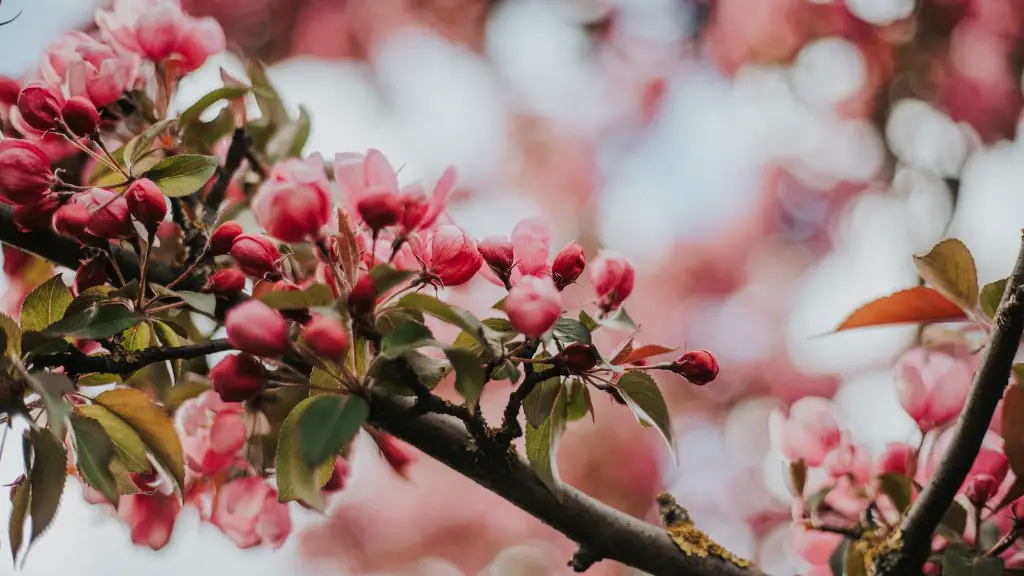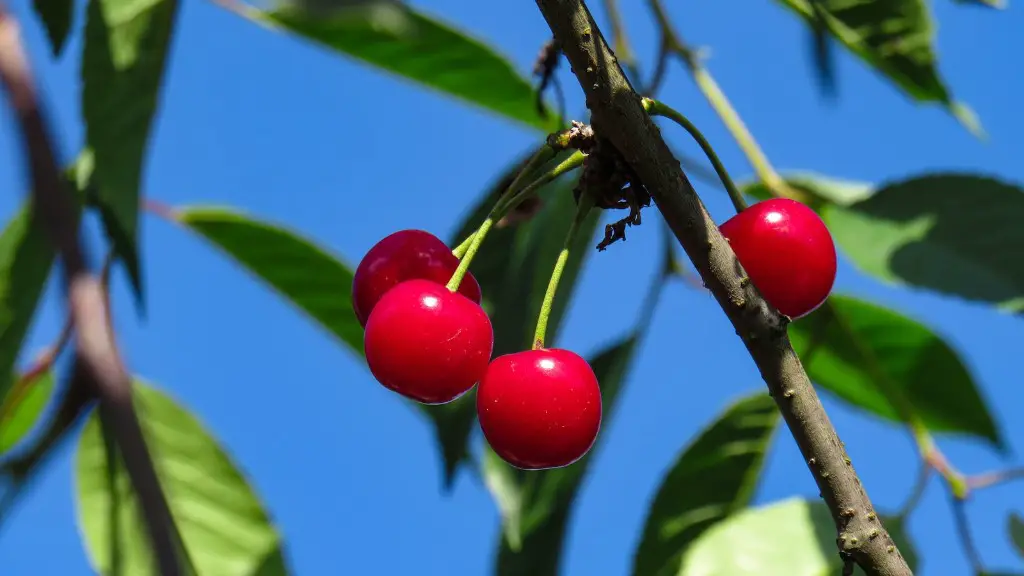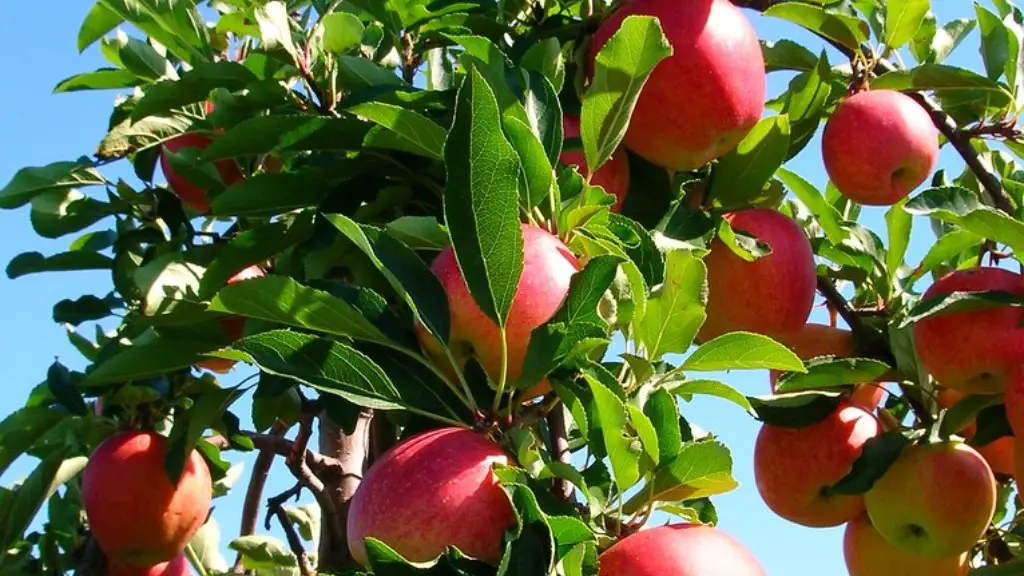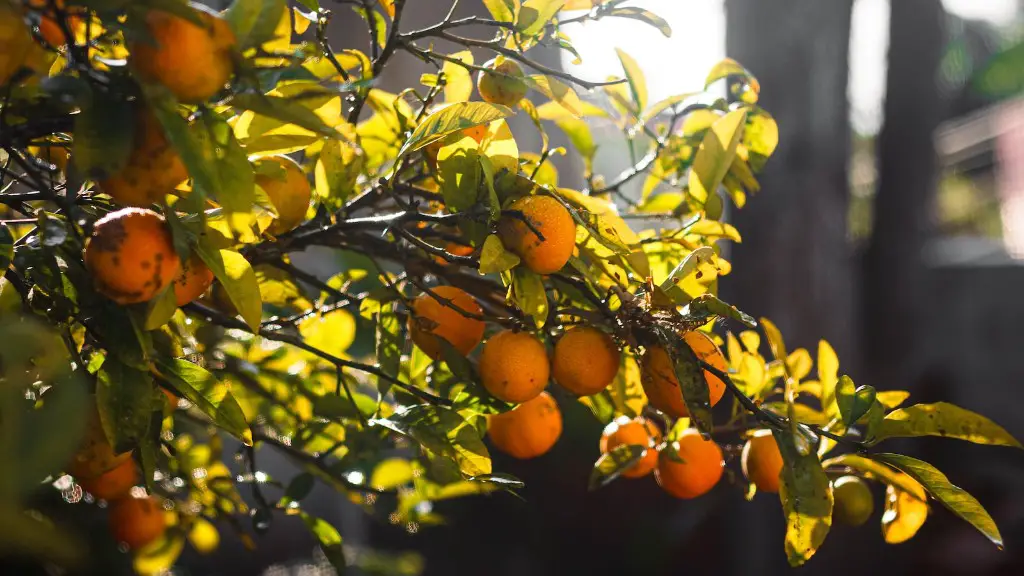Cherry trees are an attractive addition to any backyard that is both beautiful and productive. Growing your own cherry tree in a pot is not only fun but it is also very easy. Many cherry varieties are self-fertile and can produce fruit without a pollinator, making it even easier to grow your own cherry tree. With just a few simple steps, you too can learn how to grow a cherry tree in a pot.
The first step to successfully growing a cherry tree in a pot is to select a pot that is an appropriate size. If the pot is too large or too small, the tree won’t be able to thrive. A good pot should be one that is at least 24 inches wide and 18 inches deep, with plenty of drainage holes.
Once you have the pot ready, it is time to choose the right soil for your cherry tree. The best type of soil for a cherry tree is one that is well-drained, with a good amount of organic matter. A mixture of earthworm castings, shredded bark, peat moss, and compost provides a good balance of nutrients.
Next, the most important step in growing a cherry tree in a pot is to select the right variety. Sweet cherry varieties are the most common, but there are also tart cherry varieties if you want a more sour taste. Some popular varieties include Bing, Lapin, and Royal Ann.
When planting your cherry tree in the pot, make sure to fill the pot with soil all the way up to the top and slightly mound it so that the tree is slightly elevated. This will help to ensure that the cherry tree is getting the drainage it needs.
Cherry trees need a lot of light to produce fruit, so be sure to place your tree in a spot that receives at least 6 hours of direct sun each day. During the growing season, water your cherry tree at least once a week, but don’t over water or it can cause root rot.
Cherry trees can be a rewarding addition to any backyard, and growing them in a pot can be a fun and rewarding endeavor. With the right pot, soil, variety, and location, you too can grow a successful cherry tree in a pot.
Fertilizing your Cherry Tree
In order to grow and produce healthy fruit, your cherry tree needs to be fertilized regularly. A balanced fertilizer should be applied to the soil around the tree at least twice a year. For the best results, use a fertilizer specifically formulated for fruit trees.
When the tree blooms in the spring, a fertilizer that is high in Nitrogen can be applied to assist with flower bud formation. If the tree is producing fruit, use a fertilizer that is high in Phosphorus and Potassium to help promote fruit growth.
It is also important to regularly check the soil pH level, as cherries prefer an acid pH of around 6.0. If the soil is too alkaline, amendments can be added to help lower the pH, such as sulfur or aluminum sulfate.
By following these steps, you can ensure that your cherry tree is getting the nutrition it needs to remain healthy and productive.
Pollination of your Cherry Tree
Many sweet cherry varieties are self-fertile, meaning they don’t need a pollinator to produce fruit. However, in some cases, a pollinator may be needed, especially if you are growing a less common variety.
If you need to find a pollinator for your cherry tree, look for a compatible variety of cherry tree in your area. Keep in mind that not all cherry varieties are compatible, so make sure to research the variety of cherry tree you are growing before you look for a pollinator.
Pollinators such as bees, butterflies, and other flying insects can help to pollinate your cherry tree and increase the crop yield. Providing a bee-friendly environment with plenty of flowering plants will help to attract these pollinators to your yard.
If you can’t find a compatible variety of cherry tree in your area, there are also other methods of hand pollinating your cherry tree. This process involves taking the pollen from the stamens of one flower and brushing it onto the pistils of another flower. This can be quite time consuming, but it can be a successful way to ensure your cherry tree is pollinated.
Harvesting your Cherry Tree
When your cherry tree is ready to be harvested, it is important to do so at the right time for the best flavor. Different varieties of cherries ripen at different times, so be sure to check your variety for the proper ripening time. If the fruit is still too firm and green, leave it on the tree for a few more days to reach its full flavor potential.
When harvesting, be sure to handle your cherries gently as they are quite delicate. If there is excess fruit, spread a sheet or tarp beneath the tree to make it easier to gather up the fallen fruit.
Once the fruit has been harvested, it should be stored in the refrigerator to help preserve its freshness. It is also important to sort the fruit before storing it, as cherries are susceptible to damage from the presence of mold. Unripe cherries can be placed on the counter at room temperature to ripen before they are stored in the fridge.
By following these steps, you can be sure that your cherries are harvested at their best and stored properly to maximize their freshness.
Common Problems with Cherry Trees
Cherry trees can experience a variety of problems throughout the growing season, from pests to diseases. Keeping your tree healthy is the best way to avoid these possible issues. Regularly inspect your tree for signs of distress or infestation and take action if needed.
One of the most common problems with cherry trees is that of diseases, such as Powdery Mildew. This fungal disease can be prevented by making sure the tree receives proper nutrition and keeping the leaves dry. It is also important to keep the area around your tree free of debris and weeds, to reduce the chances of infestation.
Another common problem is pests, such as caterpillars, aphids, and mealybugs. Chemical pesticides can be used to help control these pests, however they should be used with caution to avoid damaging the tree. Releasing beneficial predators, such as ladybugs and lacewings, can also help to control pests and are more eco-friendly.
By staying aware of common problems and taking action when necessary, you can ensure that your cherry tree remains healthy and productive for many years to come.
Enjoying your Home Grown Cherries
Once your tree is successfully producing cherries, you can enjoy your crop in a variety of ways. Cherries can be eaten fresh, dried, frozen, or canned, and they are also delicious when cooked in desserts or cooked dishes.
Cherries are also a great source of vitamins and antioxidants, so you can enjoy them guilt-free knowing that you are providing your body with important nutrients.
You can also share your bounty with friends and family, or sell them at a local farmers market. Nothing beats the taste of a homegrown, freshly picked cherry.
Growing your own cherry tree in a pot can be an immensely rewarding experience and can provide you with a steady supply of fresh, delicious cherries for years to come. By following the steps outlined in this article, you too can learn how to successfully grow a cherry tree in a pot.




